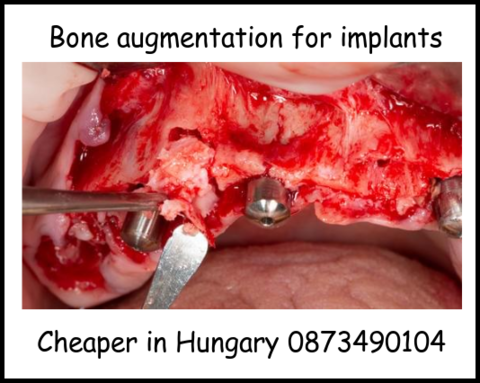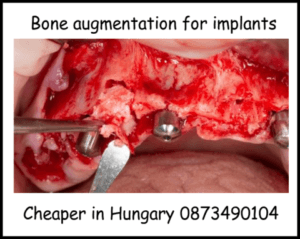Bone loss can have a major impact on dental implant treatment for missing teeth, bone augmentation for implants is a procedure that allows a dental surgeon to add more bone to the existing jawbone.

Enhance the quantity of available bone
Bone augmentation, also known as bone grafting or bone correction, is a surgical procedure used to enhance the quality and quantity of available bone in the jaw to support dental implants.
This procedure is performed when the patient lacks sufficient bone density or volume, which could compromise the success of dental implant placement.
Bone augmentation techniques aim to regenerate and strengthen the jawbone, ensuring a solid foundation for long-term implant stability.
In this article, we will discuss the importance of bone augmentation for implants and the different methods used in this procedure.
Importance of bone augmentation for implants
1. Improved Implant Success Rates:
Dental implants require a stable and healthy bone structure to ensure successful integration. The availability of adequate bone volume and density plays a critical role in the long-term success of implants.
Bone augmentation procedures help create a favorable environment for implant placement, significantly increasing their success rates, to find out more about the cheapest place to go for this treatment contact Fintan 0873490104.
2. Enhanced aesthetic results:
Insufficient bone volume can lead to noticeable deformities in the facial structure, such as sunken cheeks or receding jawlines. By restoring the optimal bone volume through augmentation, patients can achieve more natural and aesthetically pleasing results.
This contributes to a higher level of patient satisfaction and confidence.
3. Restored functionality:
Dental implants are designed to replace missing teeth and restore dental function. Insufficient bone can compromise the stability and durability of implants, affecting their ability to withstand normal chewing forces.
Bone augmentation procedures provide a solid base for implants, enabling patients to enjoy improved masticatory function, speech, and overall oral health.
Bone augmentation techniques
1. Autogenous bone grafting:
Autogenous bone augmentation for implants involves using the patient’s own bone, typically harvested from the chin, jaw, or iliac crest, to augment the deficient areas.
This method has proven to be highly effective due to the bone’s compatibility and ability to regenerate. It minimizes the risk of rejection or foreign body reactions.
2. Allogeneic and xenogeneic bone grafting:
Allogeneic bone grafting utilizes bone material from a donor, while xenogeneic bone grafting uses bone sourced from animals, such as cows or pigs.
These grafting options are commonly used when autogenous bone is not available.
Both methods have shown successful results and offer an alternative for patients with limited bone sources.
3. Synthetic bone grafting:
Synthetic bone grafting materials are synthetic substances designed to mimic the properties of real bone. These materials can be either biocompatible or bioactive, providing a scaffold for new bone growth.
Synthetic bone grafts offer the advantage of eliminating the need for a second surgical site for bone harvesting.

Conclusion
Bone augmentation for implants is a crucial procedure that ensures the success and stability of dental implants. By addressing bone deficiencies, patients can achieve improved aesthetic results, restored functionality, and enhanced oral health.
With various bone grafting techniques available, dental professionals can choose the most suitable method for each individual case.
The end result or desired outcome should be brand new teeth that look and feel just like your natural teeth, contact us Hungarian Dental Implant Centre Wexford for a free consultation.
The cheapest place for dental implants will I’m sure interest you.
Understanding the significance of bone augmentation and its various techniques is essential for both patients and dental practitioners to achieve optimal implant outcomes.
References
https://www.ncbi.nlm.nih.gov/pmc/articles/PMC8977324/


